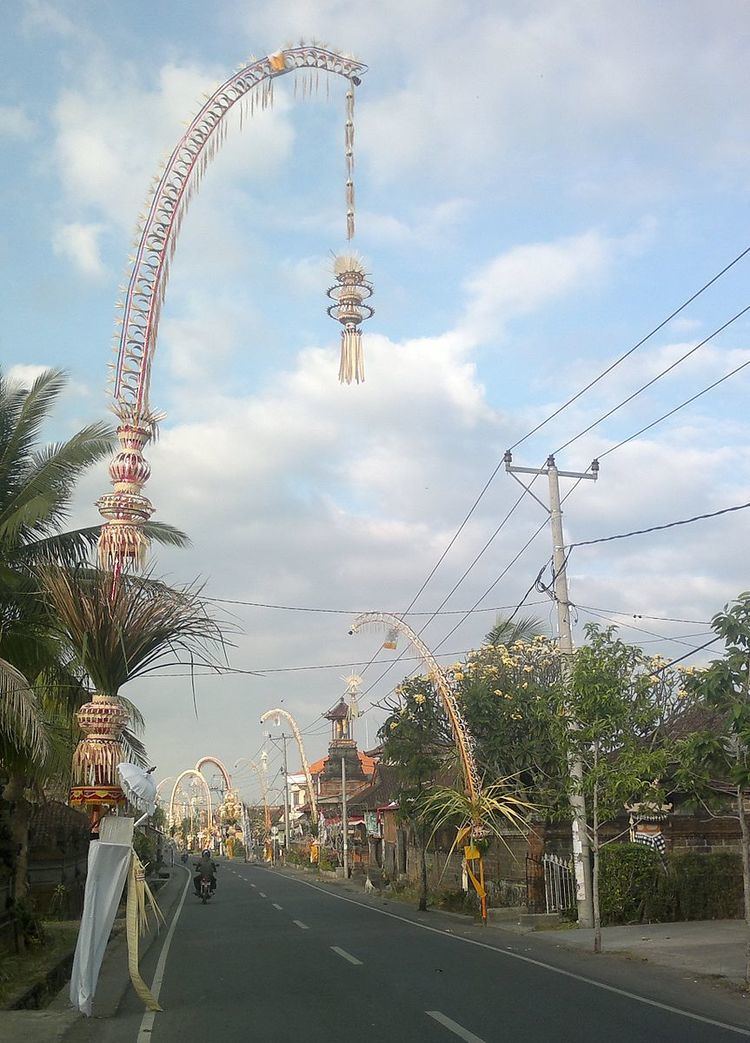Also called Galungan Type Hindus, cultural | ||
 | ||
Observances Prayers, Religious rituals Date Decided by the Hindu Balinese pawukon calendar Related to | ||
Galungan is a Balinese holiday celebrating the victory of dharma over adharma. It marks the time when the ancestral spirits visit the Earth. The last day of the celebration is Kuningan, when they return. The date is calculated according to the 210-day Balinese calendar. It is similar to Diwali, celebrated by Hindus in other parts of the world.
Contents
Significance
Galungan marks the beginning of the most important recurring religious ceremonies. The spirits of deceased relatives who have died and been cremated return to visit their former homes, and the current inhabitants have a responsibility to be hospitable through prayers and offerings. The most obvious sign of the celebrations are the penjor - bamboo poles with offerings suspended at the end. These are installed by the side of roads. A number of days around the Kuningan day have special names, and are marked by the organization of particular activities.
Dates
Galungan begins on the Wednesday (Buda) of Dunggulan, the 11th week of the 210-day pawukon calendar. This means that there are often two celebrations per solar year. Dates for 2015-2017 are as follows:
